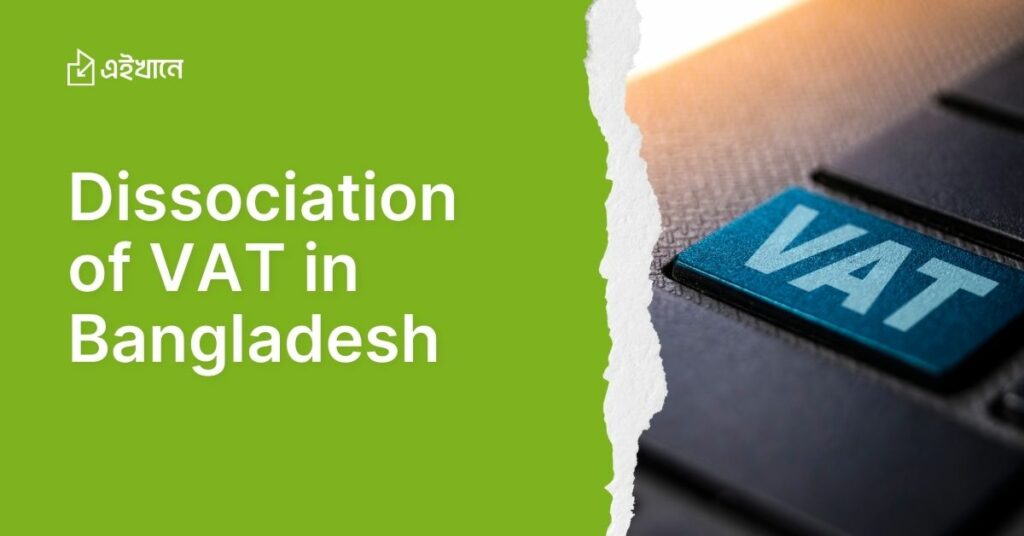Understanding VAT Suppression: Legal Implications for Bangladesh Businesses
What is VAT Suppression?
VAT suppression refers to the deliberate act of underreporting or not reporting Value Added Tax (VAT) owed by a business. This can be done through various means, such as manipulating sales records, issuing false tax invoices, or failing to declare taxable goods and services. In Bangladesh, VAT suppression is considered a form of tax evasion and is punishable under existing laws and regulations.
Why Do Businesses Engage in VAT Suppression?
Businesses may resort to VAT suppression to reduce their financial liabilities by decreasing the amount of taxes they owe to the National Board of Revenue (NBR). Some entrepreneurs believe that avoiding full compliance with VAT regulations will improve their cash flow and profitability. However, the short-term financial gain from suppressing VAT often comes at the risk of severe penalties, legal prosecution, and reputational damage.
Legal Consequences of VAT Suppression in Bangladesh
VAT suppression is a violation of the VAT and Supplementary Duty Act, 2012, in Bangladesh. If a business is found guilty of suppressing VAT, it could face hefty fines, interest on unpaid VAT amounts, and potential imprisonment for those responsible. The NBR has increased its focus on auditing company records, and businesses involved in VAT suppression can expect closer scrutiny and frequent inspections.
Penalties for VAT Suppression
The penalties for VAT suppression are outlined in the VAT law of Bangladesh. Offenders may be liable for fines ranging from BDT 10,000 to BDT 50,000 depending on the severity and nature of the offense. Additionally, the business may be required to pay backdated VAT along with interest on the unpaid amount. In extreme cases, imprisonment for up to five years is possible for those found guilty of intentionally suppressing VAT as part of a fraudulent scheme.
Impact on Business Reputation and Operations
In addition to legal consequences, VAT suppression can cause significant damage to a business’s reputation. Companies found guilty of VAT suppression may lose the trust of their customers, suppliers, and financial partners. Furthermore, operational disruptions due to audits, investigations, and fines can affect the long-term sustainability of the business. Transparency in tax compliance is not only an ethical obligation but also a key factor in maintaining positive business relationships.
The Role of Technology in Uncovering VAT Suppression
The Bangladeshi government has invested in digital tools and systems to monitor VAT compliance more effectively. Through the Electronic Fiscal Devices (EFDs) and automated tax filing platforms, businesses are now expected to maintain accurate and transparent financial records. These advancements make it harder for businesses to conceal their actual revenues and engage in VAT suppression, as discrepancies in reported data can trigger immediate investigations by the NBR.
How to Prevent VAT Suppression in Your Business
To avoid the risks associated with VAT suppression, businesses in Bangladesh should ensure thorough record-keeping and transparent financial practices. Engaging professional accountants who are well-versed in VAT regulations and filing procedures can help maintain compliance. Additionally, regular internal audits can identify any discrepancies early on, allowing businesses to rectify issues before they escalate into legal violations.
Step-by-Step Guide to Dissolving Your VAT Registration in Bangladesh
Prepare the Necessary Documentation
Before starting the process of dissolving your VAT registration, it’s crucial to gather all necessary documents. You will need to submit copies of your business’s VAT registration certificate, tax clearance certificates, and any outstanding VAT payment records. Additionally, you should prepare financial statements that demonstrate the cessation of taxable activities. These documents will be requested by the VAT authority to ensure full compliance with regulations during the dissolution.
Submit a Formal Application to the NBR
The next step is to submit a formal application for deregistration to the National Board of Revenue (NBR). The application must include reasons for your request, such as closure of the business or cessation of VAT-eligible activities. You can do this through the NBR’s online portal or file a hard copy at the regional VAT office. Ensure that your application is accurate and contains all required information to prevent delays in processing.
Provide Evidence of Ceasing Taxable Activities
To successfully dissolve your VAT registration, you must provide evidence that your business is no longer engaged in taxable transactions. This could include closing down sales, terminating contracts, or liquidating inventory. The NBR may request an audit of your business operations to verify that no further taxable income is being generated. Any remaining VAT owed must be settled before deregistration can proceed.
Coordinate with the VAT Officer for Final Audit
After submitting your application, a VAT officer will likely conduct a final audit or inspection of your business. The officer will verify that all outstanding VAT payments have been made and that your business has ceased engaging in VAT-applicable activity. It is essential to cooperate fully and provide any additional documents or clarifications required during this stage.
Receive an Official Deregistration Notice
Once your application is reviewed and approved, the NBR will issue an official notification of VAT deregistration. This document serves as proof that your VAT obligations have been fulfilled and that your business is no longer subject to VAT. Make sure to keep this notice in your records, as it may be requested during future audits or business dealings.
Update Business Records and Inform Stakeholders
After receiving confirmation of your VAT deregistration, update your internal business records and notify key stakeholders such as suppliers, customers, and financial institutions. This will prevent confusion regarding future VAT obligations and ensure that your partners are aware of any changes in how your business handles taxation. It’s also advisable to revise any contracts or agreements that previously included VAT-related terms.
Monitor for Future Compliance Reviews
Even after deregistration, the NBR reserves the right to audit your business for previous VAT compliance within a specified timeframe. Be prepared to provide historical documents and records if requested. Ongoing monitoring will help protect your business from potential disputes or penalties related to past VAT liabilities.
Key Considerations Before Dissociating from VAT Registration
Evaluate Whether Your Business Still Qualifies for VAT Deregistration
Before proceeding with VAT deregistration, it is vital to assess whether your business qualifies for dissociation under the VAT and Supplementary Duty Act, 2012. Businesses that have ceased taxable activities or whose annual turnover has dropped below the mandatory VAT threshold may qualify for deregistration. However, if your business still engages in taxable transactions, deregistration might lead to penalties, as continued taxable activity without VAT registration is deemed illegal.
Review Outstanding VAT Liabilities
Carefully review any unpaid or backdated VAT liabilities before initiating the deregistration process. The National Board of Revenue (NBR) will not approve a request for VAT deregistration until all outstanding VAT payments, including interest and penalties, are cleared. Failure to address these liabilities could complicate your deregistration efforts and result in additional fines or enforcement actions by the tax authorities.
Understand the Impact on Future Business Activities
Deregistering from VAT can have long-term implications for your business, particularly if you plan to re-enter the taxable marketplace or engage in activities that necessitate VAT collection in the future. If your business resumes taxable operations after deregistration, you will need to formally reapply for VAT registration, potentially subjecting yourself to NBR scrutiny based on past filings. Evaluate whether your current situation warrants full deregistration or if temporary suspension under VAT exemptions might be more appropriate.
Assess the Effects on Relationships with Suppliers and Customers
Dissociating from VAT registration can affect your relationships with suppliers and customers who expect transparency and compliance with tax regulations. Without VAT registration, suppliers may charge you higher prices since they will no longer treat your business as a VAT-creditable partner. On the customer side, business clients may require VAT-compliant invoices, and not being VAT registered could deter them from continuing their business relationship with you.
Consider Legal and Financial Risks Involved
Though VAT deregistration can seem like an administrative decision, it carries both legal and financial risks. Improperly assenting to VAT deregistration—especially when taxable activities are ongoing—can expose your business to further audits, potential legal disputes, and significant financial penalties. It’s advisable to consult with a legal or tax professional who specializes in VAT law to ensure that your decision is compliant with the necessary tax codes and does not jeopardize your business’s financial health.
Prepare Your Business for Post-Deregistration Audits
Even after successfully deregistering from VAT, your business can still be audited for activities conducted during the period when you were registered. Keep comprehensive records of all VAT-related activities, including sales, purchases, and VAT filings, as the NBR may request this information during compliance checks. Being unprepared for post-deregistration audits can result in disputes that tarnish your standing with tax authorities.
Ensure Smooth Transition for Internal Operations
Transitioning out of VAT registration requires changes to your internal accounting processes as well. You will need to update your invoicing systems, remove VAT-related accounting entries, and inform your finance team of the new requirements. Additionally, tax reporting deadlines and documentation procedures will change, affecting how your team handles financial statements and year-end reports. Ensuring a smooth internal transition will help avoid disruptions in operational efficiency after deregistration.
Navigating the Bureaucracy: VAT Deregistration Process Explained
Understanding the VAT Deregistration Criteria
Before proceeding with VAT deregistration, it is essential to understand the specific criteria laid out by the National Board of Revenue (NBR) in Bangladesh. Businesses can apply for deregistration if they have ceased taxable activities, or if their annual turnover falls below the VAT threshold. Other circumstances, such as business closure or restructuring, may also warrant deregistration. However, any attempt to deregister must be accompanied by a comprehensive review to confirm that your business meets these criteria.
Submitting an Online Deregistration Request
To simplify the process, the NBR has made it possible to submit VAT deregistration requests through their online portal. You will need to log in using your existing credentials and access the VAT deregistration section. Once there, you must provide detailed reasons for seeking deregistration and attach relevant documents such as financial statements, final sales records, and proof of business cessation (if applicable). Ensure all details are accurate to avoid delays during the processing stage.
How to Handle Outstanding VAT Obligations
One of the key prerequisites for VAT deregistration is settling any outstanding dues with the NBR. This includes unpaid VAT, interest, and any penalties accrued over time. If your business owes VAT for prior periods, it must be paid before the NBR processes your deregistration request. Failing to clear these obligations could lead to additional fines or a rejected deregistration application, complicating your ability to exit from the system.
Responding to an Audit During the Deregistration Process
The VAT deregistration process often involves a final audit conducted by an NBR-appointed officer. This audit ensures that no further taxable activities are being undertaken and that all required VAT payments have been made. Prepare by organizing your financial records, invoices, and sales history in case the NBR requests these during the audit. Cooperating fully with the auditing officer helps to expedite the process and minimizes the risk of legal complications.
The Role of Tax Clearance Certificates
A tax clearance certificate plays a vital role in VAT deregistration. It is a document issued by the NBR that confirms all previous tax obligations have been fulfilled. In most cases, the NBR requires businesses to present this certificate as part of the deregistration process. Without it, deregistration applications may face significant delays, as the NBR will not verify the closure of your tax account until all liabilities are settled.
Follow-up Procedures After Deregistration Approval
Once your deregistration is approved, and you’ve received confirmation from the NBR, the next step is to adjust your business operations accordingly. This includes updating your invoicing systems, informing clients and vendors about the change, and discontinuing the collection of VAT. You should also maintain deregistration documents in your records, as they may be referenced during future audits or compliance reviews by the NBR.
Post-Deregistration Compliance Monitoring
Even after successful deregistration, the NBR reserves the right to audit your previously VAT-registered activities. It’s essential to hold on to all past VAT filings, sales records, and supporting documentation for the required statutory period. Being prepared for potential post-deregistration audits can save your business from headaches down the line and ensure that you remain in good standing with the tax authorities.
When and How to Successfully Cancel Your VAT Registration in Bangladesh
When Should You Cancel Your VAT Registration?
The appropriate time to cancel your VAT registration is when your business meets the necessary criteria for deregistration under Bangladeshi law. This could occur if your business has ceased operations, or if your annual turnover no longer meets the minimum threshold for VAT eligibility. Additionally, if your business has transitioned into exempted sectors that do not require VAT collection, it may be time to consider cancellation. It’s crucial to evaluate the long-term plans of your business before initiating the cancellation process to avoid complications down the road.
Recognizing the Signals for VAT Deregistration
Certain signs indicate it may be time to cancel your VAT registration. For example, if you notice that the administrative burden of VAT compliance outweighs the benefits due to reduced sales or business activity, deregistration could be a viable option. Similarly, if your business is undergoing significant structural changes such as a merger, acquisition, or liquidation, canceling VAT registration can simplify the financial transition. Keeping tabs on these signals allows for timely decision-making and smooth cancellation procedures.
How to File for VAT Deregistration
To successfully cancel your VAT registration, you’ll need to submit a formal application to the National Board of Revenue (NBR) either via their online portal or through a regional VAT office. Your application must clearly state the reasons for requesting cancellation, whether it’s due to business closure or cessation of taxable activities. Supporting documents such as financial records, VAT certificates, and a tax clearance certificate will be required. Make sure your records are up-to-date and complete to prevent delays.
Meeting the NBR’s Criteria for VAT Deregistration
The NBR imposes strict criteria on businesses seeking to cancel their VAT registration. To qualify, you must demonstrate that you’ve permanently stopped engaging in taxable activities or that your turnover has consistently remained below the VAT threshold. Furthermore, if your business is closing, you’ll need to show that all taxable inventory has been sold or liquidated. Meeting these conditions is vital for approval, and failing to do so could result in your application being rejected.
Settling Outstanding VAT Liabilities
Before your VAT registration can be canceled, all outstanding VAT liabilities, including unpaid taxes, interest, and penalties, must be cleared. The NBR will not approve deregistration until these obligations have been resolved. If your business owes significant amounts, setting up a payment plan with the NBR before filing for deregistration may be an option. Ensuring all debts are paid off will speed up the process and prevent potential legal consequences.
What to Expect During Final Audits
A critical aspect of the VAT cancellation process is the final audit conducted by the NBR. Once you’ve submitted your deregistration request, an officer will likely be assigned to review your financial records and verify that no further taxable activities are ongoing. Prepare yourself for this process by organizing invoices, sales records, and VAT filings. Successfully passing the final audit is essential for obtaining official approval for deregistration.
Post-Deregistration Steps
After receiving confirmation of VAT deregistration from the NBR, it’s important to take steps to update your business operations. Modify your invoicing and accounting systems to reflect the change, and inform clients, vendors, and other stakeholders that you are no longer VAT-registered. Additionally, retain the deregistration confirmation and any associated documents for future reference, as the NBR may still conduct audits related to your past VAT activities.
Monitoring Your Business Post-Cancellation
Even after canceling your VAT registration, your business should remain mindful of potential compliance reviews. The NBR reserves the right to audit your records for a specified period even after deregistration. Keep accurate historical transaction records and ensure that your business complies with other tax obligations moving forward. Monitoring for any post-cancellation compliance will help avoid future disputes or penalties.


